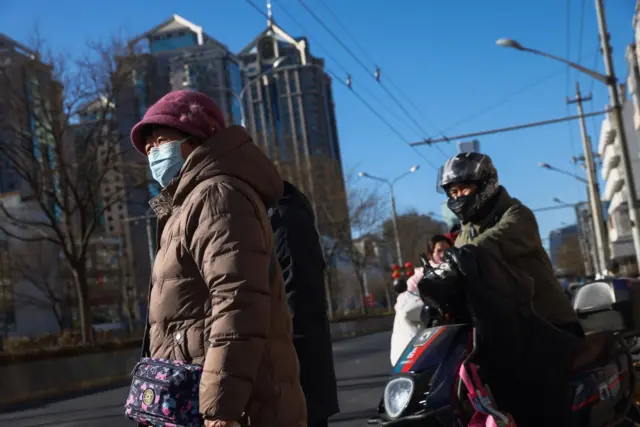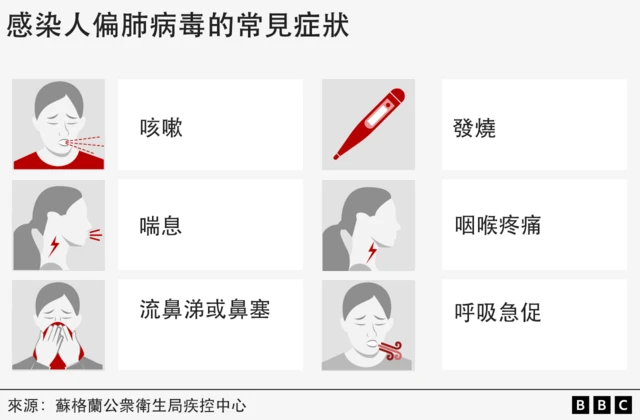Human metapneumovirus: Infected people have appeared in China and India, and humans may have coexisted with it for decades

The recent emergence of human metapneumovirus (HMPV) in northern China has raised alarm about the coronavirus that emerged in China five years ago and eventually became a global pandemic that killed an estimated 7 million people.
Chinese health officials reportedly said the number of infections among people 14 years old and younger was growing, but they denied that local hospitals were being overwhelmed by the virus.
India has also seen positive cases of human metapneumovirus.

Is this a new virus?
The virus was first identified in 2001, according to the U.S. Centers for Disease Control and Prevention, but experts say it may have been around for decades.
Generally, symptoms of human metapneumovirus infection are similar to those of colds and flu, including cough, fever, nasal congestion, and shortness of breath. Some people may have more severe symptoms.
The CDC said the virus can cause upper and lower respiratory tract diseases such as bronchitis and pneumonia in people of all ages, but children, the elderly and people with weakened immune systems appear to be more susceptible to infection.
The incubation period for this virus is estimated to be three to six days, and the duration of symptoms depends on the severity, similar to other viral respiratory infections.
The CDC also said that surveillance data showed that human metapneumovirus is more common in late winter to spring in temperate climates.
How does this virus spread?
The most likely route of transmission of human metapneumovirus is from person to person through coughing and sneezing.
It can also be spread through close person-to-person contact, such as touching hands, shaking hands, or touching an object that has the virus on it and then touching your mouth, nose, or eyes.
The virus usually spreads during cooler seasons, when people spend more time indoors.

Why are children and the elderly particularly vulnerable?
The same person can be infected with human metapneumovirus repeatedly. Experts say symptoms are usually most severe the first time you get infected. After that, immunity builds up and the consequences of exposure to the virus are lessened, as long as the immune system remains effective and has not been weakened by diseases such as AIDS or cancer.
This may explain why children under five and people over 65 are particularly vulnerable to severe illness from the virus, as they may have relatively weaker immune systems and may have respiratory diseases.
But given that the virus has likely been around for decades, experts believe humans have developed considerable immunity to it.
Is the situation in China serious?
Videos and pictures of citizens wearing masks in hospitals have appeared on Chinese social media, leading to speculation that local hospitals are overwhelmed.
Some media reports compared these scenes to the outbreak of the new coronavirus.
Kan Biao, director of the Institute of Infectious Diseases at the Chinese Center for Disease Control and Prevention, said at a press conference on December 27 that the epidemic trends of infections caused by different pathogens are different, and it is expected that this winter and next spring will still see alternating or overlapping epidemics of multiple respiratory infectious diseases.
He said that the positive rate of human metapneumovirus cases aged 14 and below is on the rise, with the upward trend more obvious in the northern provinces. However, judging from the current situation, the scale and intensity of the epidemic of respiratory infectious diseases this year are lower than last year.
Professor Tulio de Oliveira, director of the South African Center for Epidemic Response and Innovation, said that human metapneumovirus is only one of four epidemic viruses that have recently broken out in China, the others include respiratory syncytial virus (RSV), COVID-19 and influenza.
He believes that the pressure on Chinese hospitals remains to be seen, given the seasons and the spread of the four viruses.
China announced on Friday it was piloting a surveillance system for pneumonia of unknown origin as cases of respiratory illnesses are expected to rise in winter, a stark contrast to the lack of preparedness when the coronavirus first emerged five years ago.
Comments
Post a Comment